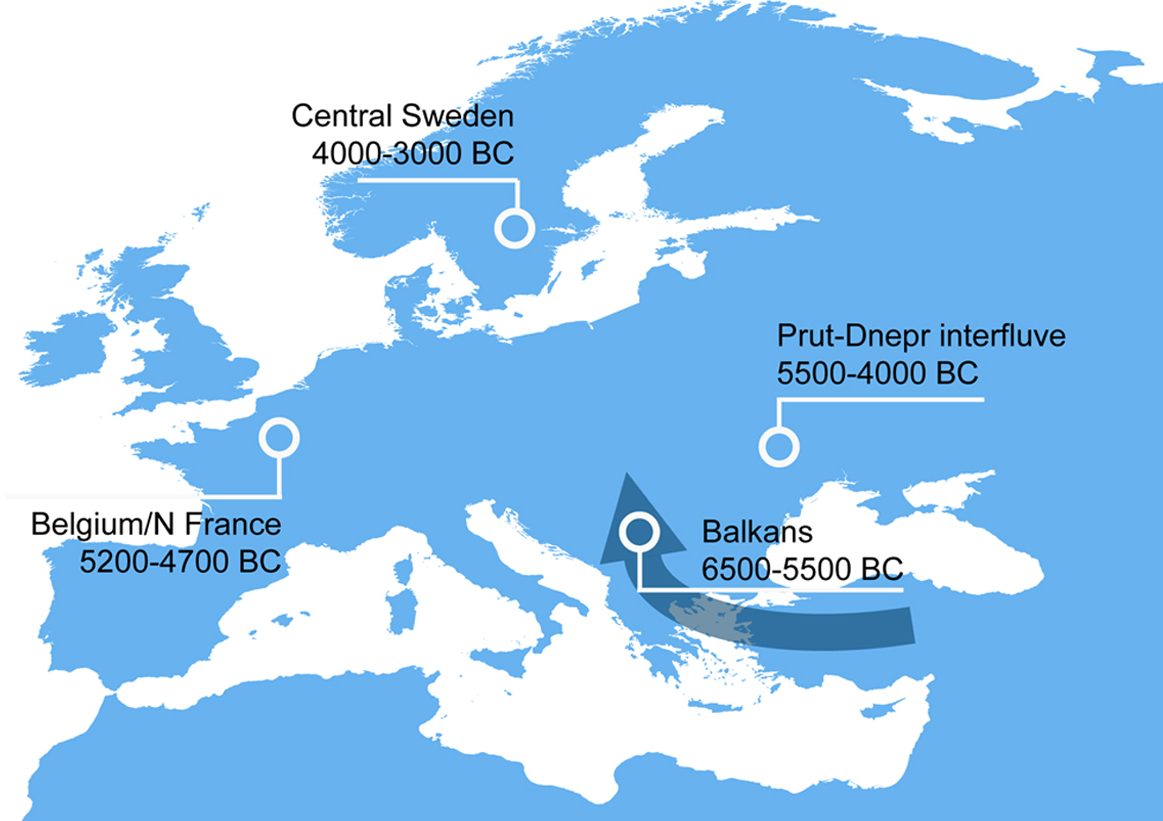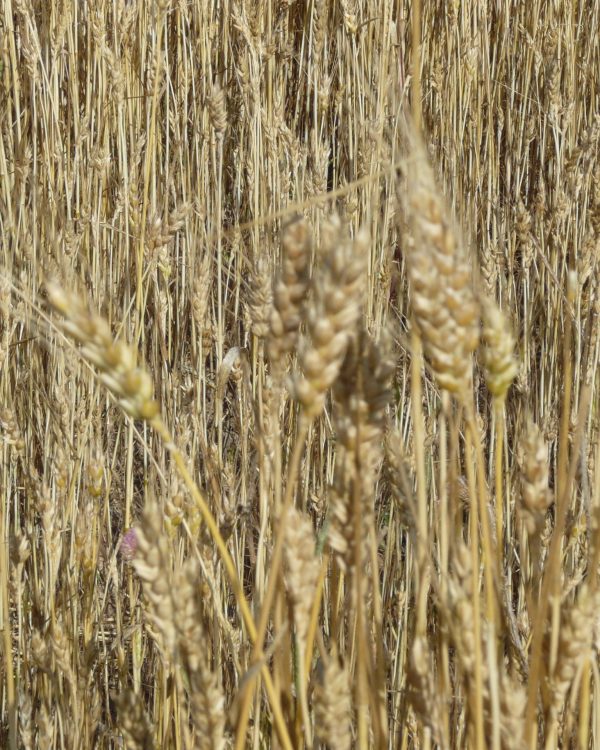Theme 1: Archaeology
Collect and evaluate archaeological and bioarchaeological data, select samples of artefacts and bioarchaeological remains from four case study regions
Balkans, 6000-5500 calBC. Located in a transitional region between the areas with Mediterranean and continental climate, farming sites in the Balkans reflect the earliest introduction of crops and livestock beyond their native climatic range.
Prut-Dnepr interfluve, 5500-4000 calBC. Sedentary Neolithic farming attained here its maximum eastward extent, reaching but not crossing the borders of the East European forest-steppe.
Belgium/Northeastern France, 5200-4700 calBC. This was the region of greatest expansion of Linearbandkeramik (LBK) communities to the north-west.
Central Sweden, 4000-3500/3000 calBC. Early Neolithic agriculture reached here its northernmost extent, corresponding to the border between boreal forest and taiga.

Themes 2-4: Environment, Plant & Animal Husbandry
Test the relationship of domesticates’ past range expansions and climate, generate large new datasets of bioarchaeological evidence (isotopes of plant and animal remains and lipid residues in pottery), recover the productive dynamics of early cultivation and herding
Reconstructions of palaeoclimate in the Early and Middle Holocene in Europe with sufficient spatial and temporal resolution are fundamental for our research programme. At Senckenberg Climate and Biodiversity Research Centre (BiK-F), existing results from multiple palaeoclimate models and latest results from the Paleoclimate Modelling Intercomparison Project Phase 4 (PMIP4) will be evaluated as potential sources of palaeoclimatic data for the project.
Using reconstructed palaeoenvironmental conditions, the project will employ correlative SDM to model the environmental niches of the eight “founder crops” (einkom, emmer, barley, pea, lentil, bitter vetch, grass pea, and chick pea) and of domestic cattle, pig, sheep and goat, at the spatial scale of Europe and for the period between 6500 and 3000 calBC.
The main aim of cultivation and herding was to acquire food for the farmers’ immediate needs; we therefore anticipate that pioneer farmers had adjusted their agropastoral practices in response to ecological change.
A wealth of information on past husbandry practices from dairying, foddering and timing of births to crop manuring and water supply, will be derived from isotope signals in plant and animal remains. By novel approaches of quantitatave inference, parameters of crop and herd productivity will be estimated from the isotopic, zooarchaeological and archaeobotanical data. This will allow direct comparisons of agropastoral performance across time and space in Europe.

Theme 5: Social Relationships
Assess the role of social parameters for a society’s persistence in time using agent-based modelling
Agent-based modelling (ABM) is a powerful tool for solving problems which are intractable by human intuition alone, which often fails us when multiple factors interact, such as the analysis of non-linear trends and multivariate interactions of numerous units over long spans of time. The project will employ spatially explicit ABM to elucidate the effect of social relationships on sustainability, defined as the capacity of a farming society to carry on and persist over time, whilst at the same time expanding in space. We will test the hypothesis that, in colonising farming populations, webs of social support maintained through exchange relationships provide insurance against local oscillations of resource supply in new environments.

METHODS
Species Distribution Models
Species distribution models (SDM) are quantitative models of species-environment relationships based on empirical data. SDM is well-suited to the theoretical trajectory and objectives of this project, providing the rigorous quantitative methods that will allow us to anchor domestic species in their environmental contexts.
Stable Isotope Analysis
The methods of stable isotope analysis provide a developmental and relational perspective on the links of living organisms with each other and with the abiotic environment. The stable isotope compositions of plant and animal tissues result from the environmental conditions in
which these tissues developed. They reflect an individual’s consumed food (i.e. other plants’ and animals’ tissues) and thus the dependencies of the different species on each other. Stable isotope compositions record indirectly how past plant and animal environments are modified by humans.
Quantitative Statistical Inference
Although isotope analysis captures a number of dependence relations between farmers and their domesticates, further inference is necessary to quantify these dependencies. Statistical methods provide means for bridging the gap between “raw” bioarchaeological data and agro-pastoral productivity, and to quantify past agro-pastoral outputs directly from bioarchaeological data.
Agent-Based Modelling
Agent-based models (ABM) are a class of formal models comprising computational units (“agents”) situated in an environment. The agents are given characteristics that make them capable of autonomous decisions and interaction with each other and the environment. In ABM, macro-scale (e.g. population-level) properties are not programmed into the model but emerge in cumulative result of the decisions and actions of the individual agents. Through their social actions the agents ‘grow’ a society and its history from the bottom up.